Campaign to Protect Peru’s Last Uncontacted Tribes
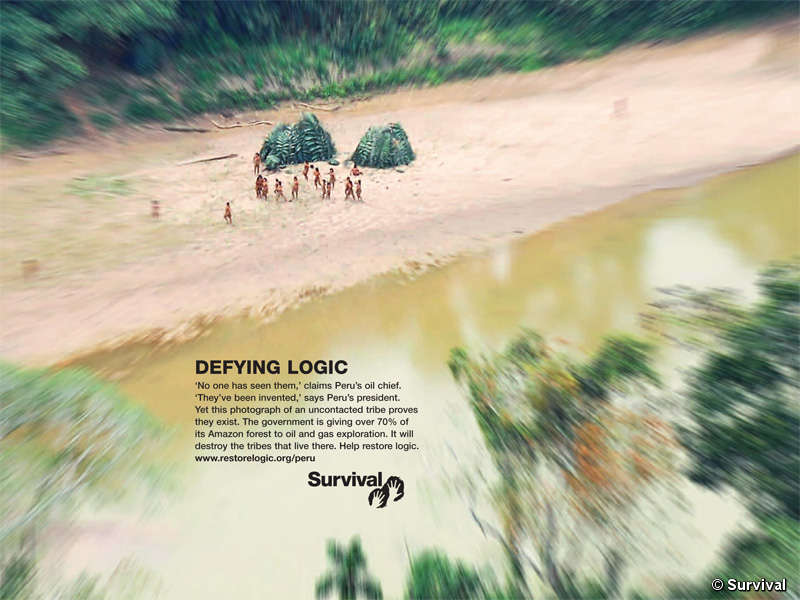
Global Ad Campaign For Peru’s Uncontacted Tribes
Survival International
May 5, 2010
An ad supporting Peru’s last uncontacted tribes is appearing in publications around the world in a bid to stop Peru’s government allowing an oil pipeline to be built through the Indians’ territory…
(more…)
Inca Burial Ground Shows Evidence of Spanish Conquest
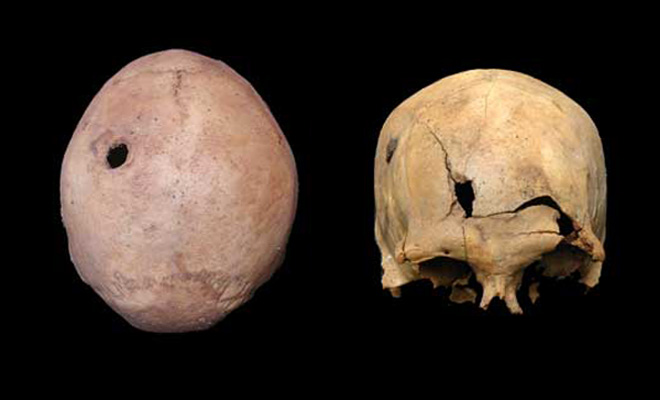
Evidence of Spanish bullet holes in 500-year-old Inca skulls, found at a burial site on the outskirts of Lima, Peru
Inca Skeletons Show Evidence of Spanish Brutality
Science News
April 2, 2010
If bones could scream, a bloodcurdling din would be reverberating through a 500-year-old cemetery in Peru. Human skeletons unearthed there have yielded the first direct evidence of Inca fatalities caused by Spanish conquerors…
(more…)
Oldest City in the Americas in Danger of Being Destroyed by Locals
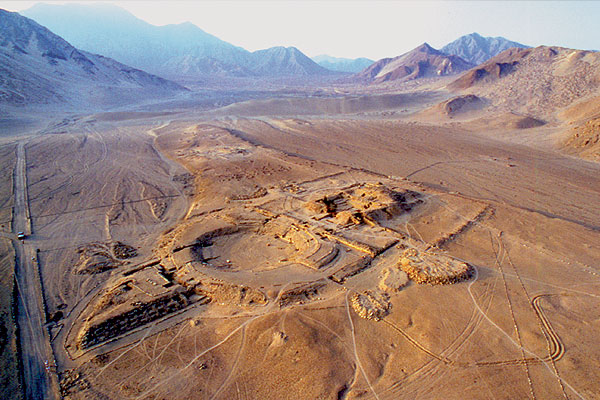
An aerial view of some of the pyramids at Caral, the most ancient city in the New World and located about 160 miles north of Lima, Peru
Authorities to Inspect Archaeological Site of Caral to Verify Alleged Attack
Farmers Have Apparently Invaded one of the Pyramids in the Area of “Era de Pando” to build a Water Reservoir
March 23, 2010
El Comercio (Peru) (translated by Kim MacQuarrie)
Representatives of the Barranca Provincial Prosecutor’s office will carry out an investigation tomorrow at the archaeological site known as “Era of Pando,” a city consisting of 26 buildings belonging to the Caral culture, where farmers are apparently destroying this cultural heritage…
(more…)
Climate Change Affecting Andes Mountain Villages in Peru
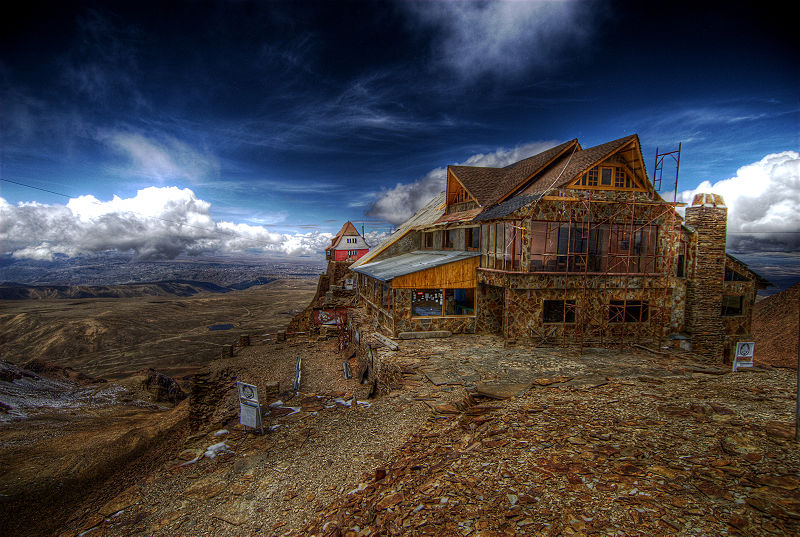
The Bolivian ski resort of Chacaltaya, stranded like a beached whale once its 18,000-year-old glacier disappeared permanently in 2009
(Note: Since the early 20th century, glaciers around the world have been retreating, presumably as a result of humans burning greater and greater quantities of oil and coal, rampant deforestation, and the raising of livestock, which create greenhouse gases that absorb more sunlight and thus heat the atmosphere. Mt Kilamanjaro’s glacier in Tanzania, for example, which has been around for 12,000 years, is expected to completely disappear by 2020… (more…)
Ancient Nazca Civilization Committed Fatal Ecological Error
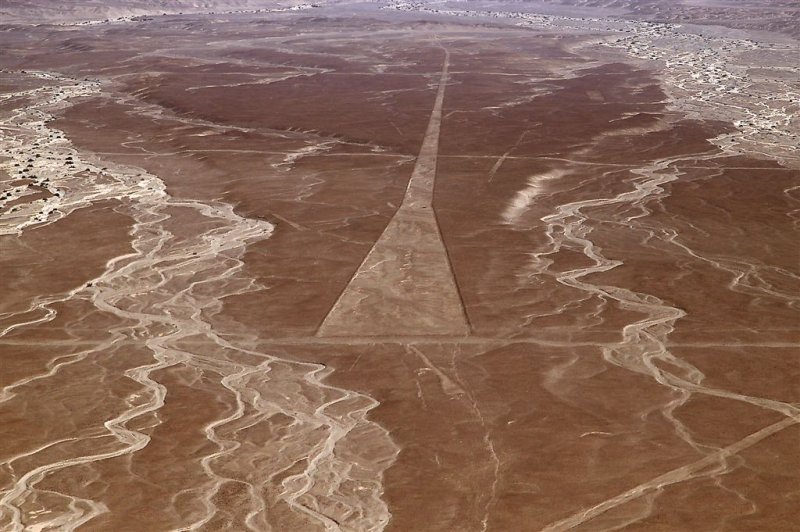
An enormous “Nazca Line” as seen from the air on Peru’s SW desert coast; the Nazca civilization, known for its complex weavings, beautiful pottery, and the “Nazca Lines,” visible only from high above the ground, mysteriously collapsed around the middle of the first millennium, A.D.
Logging Caused Nazca Collapse
BBC News
November 2, 2009
The ancient Nazca people of Peru are famous for the lines they drew in the desert depicting strange animal forms.
A further mystery is what happened to this once great civilization, which suddenly vanished 1,500 years ago….
(more…)
Peruvian Journalist Suggests Napalming Amazonian Natives
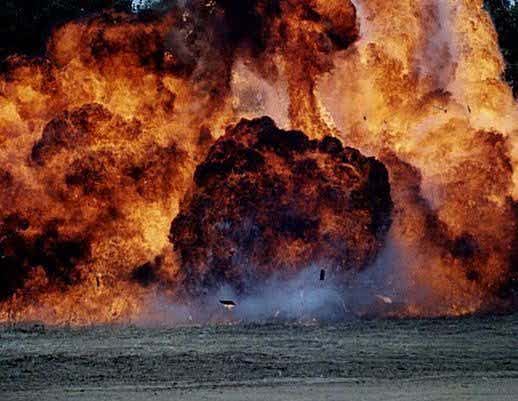
Survival International: Call for Napalm Bombing of ‘Savages’ in Peru’s Amazon Wins “Most Racist Article of the Year Award”
Peruvian Times
September 2, 2009
An article implying that Peruvian natives should be bombed with napalm has been named by London-based Survival International as the ‘most racist article’ published in the last year by the mainstream media.
(more…)
Did Hiram Bingham Discover Machu Picchu Artifacts–Or Buy Them?
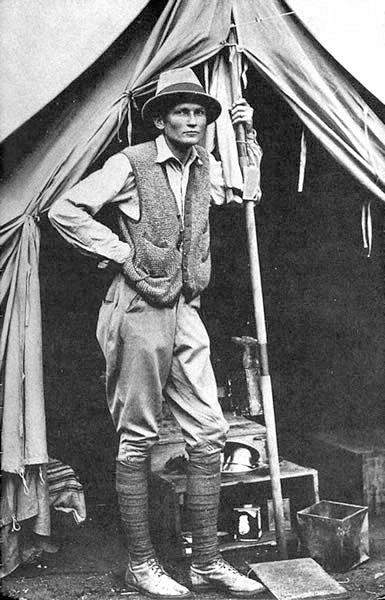
Hiram Bingham at Machu Picchu in 1912
Bingham Didn’t Dig Up The Yale Huacos –He Just Bought Them
August 6, 2009
Caretas
By Nicholas Asheshov
Here in Urubamba Hiram Bingham’s reputation has taken a knock in the run-up to the centennial of the discovery in 1911 of Machu Picchu.
The revisionists are saying that Bingham was not just a persistent explorer but also, frankly, a humbug.
Bingham’s economical use of the truth has been compounded by the poorly-advised refusal of Yale University and its Peabody Museum of Natural History to return, as promised, what Bingham’s Yale expeditions dug up in the Vilcabamba 1912-15.
The Peruvian government is taking Yale to court but they’re not pushing it.
Here’s why. None of the good pieces in the Yale Machu Picchu collection were actually dug up by Yale archaeologists.
(more…)
Indigenous People Fight Against Peru’s “Law of the Jungle”
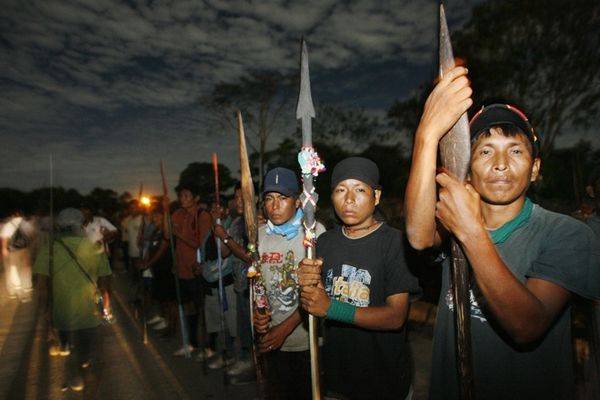
Native Protestors at the entrance of Yurimagua, in the northern Peruvian Amazon
Blood at the Blockade: Peru’s Indigenous Uprising
NACLA (May-June 2009)
Gerardo Rénique
On June 6, near a stretch of highway known as the Devil’s Curve in the northern Peruvian Amazon, police began firing live rounds into a multitude of indigenous protestors – many wearing feathered crowns and carrying spears. In the nearby towns of Bagua Grande, Bagua Chica, and Utcubamba, shots also came from police snipers on rooftops, and from a helicopter that hovered above the mass of people. Both natives and mestizos took to the streets protesting the bloody repression.
(more…)
Ancient Inca Sun Pillars Still Mark June Solstice
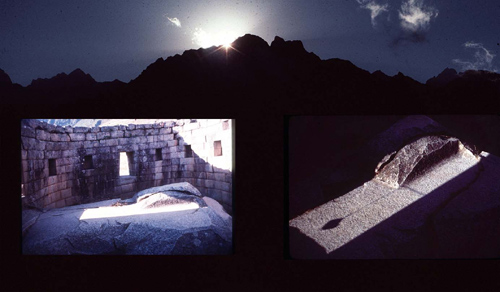
(Above: The Torreón at Machu Picchu is a tower built around a stone that still has a carved groove in it. Once a year, the groove is illuminated as the rising sun shines through one window each June solstice. The window also frames the Pleiades constellation, which was used by the Incas to decide when to plant potatoes. At its height in the early 16th century, the Incas’ 2,500-mile-long empire was littered with celestial observatories, which aided the Incas in the precise sowing and reaping of various crops–KM).
When the Sun Hits the White Granite Boulder, it’s the Solstice
By Nicholas Asheshov
Caretas
On June 21, just over a week from now, the winter solstice, easily the most important day in the ancient Andes, falls due and brilliant rays of sun will be flooding just after dawn through carefully-designed Inca windows onto sharp once-a-year marker stones…
(more…)
1,500-Year-Old Moche Indian Lord’s Tomb Discovered in Peru
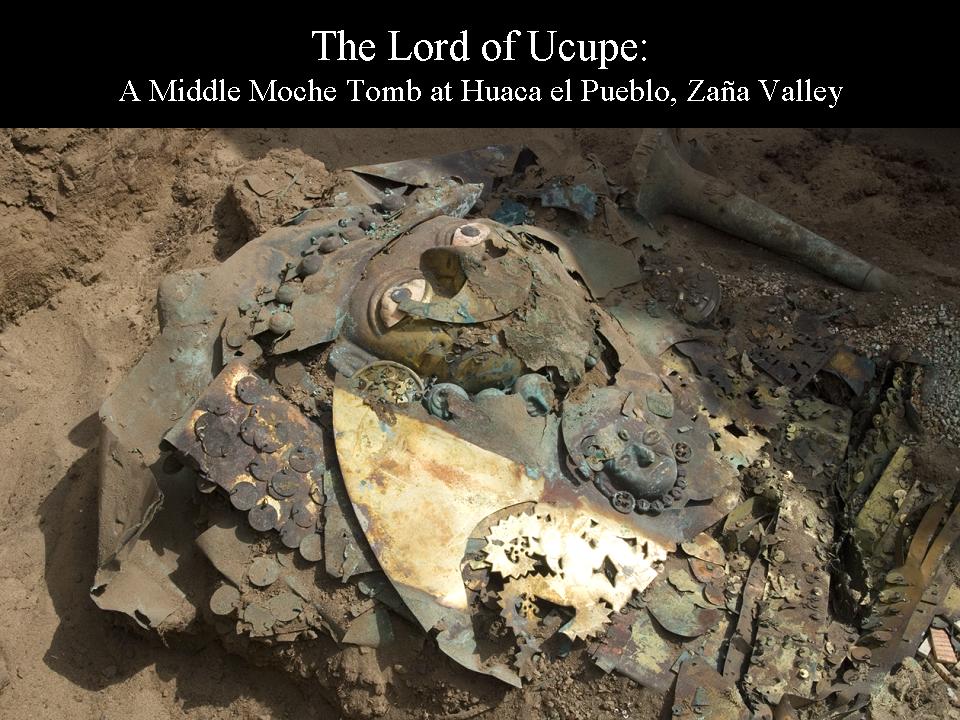
The tomb of the “Lord of Ucupe,” a Moche lord who died in what is now nothern Peru in @ 500 A.D. (photos: Steve Borget)
“King of Bling” Tomb Sheds Light on Ancient Peru
National Geographic News
April 10, 2009
Packed with treasure in the styles of two ancient orders, the 1,500-year-old tomb of the Moche Indian “king of bling” is like no other, according to archaeologist Steve Bourget.
Discovered in Peru at the base of an eroded mud-brick pyramid, the tomb gradually yielded its contents last summer.
Among the finds: 19 golden headdresses, various pieces of jewelry, and two funerary masks, as well as skeletons of two other men and a pregnant woman.
(more…)









